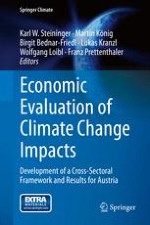2015 | OriginalPaper | Chapter
22. Climate Change Impacts at the National Level: Known Trends, Unknown Tails, and Unknowables
Authors : Karl W. Steininger, Gernot Wagner, Paul Watkiss, Martin König
Published in: Economic Evaluation of Climate Change Impacts
Publisher: Springer International Publishing
Activate our intelligent search to find suitable subject content or patents.
Select sections of text to find matching patents with Artificial Intelligence. powered by
Select sections of text to find additional relevant content using AI-assisted search. powered by
